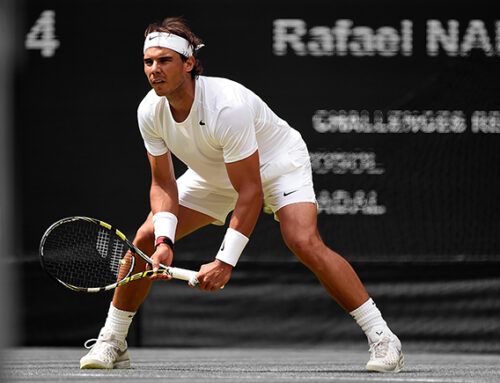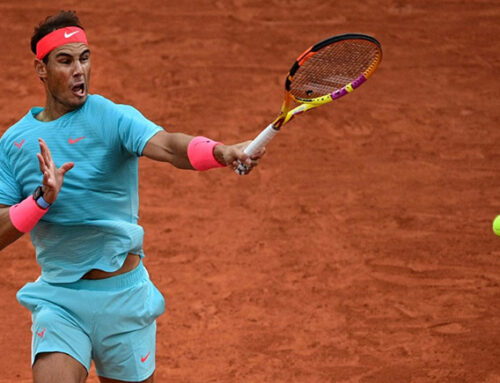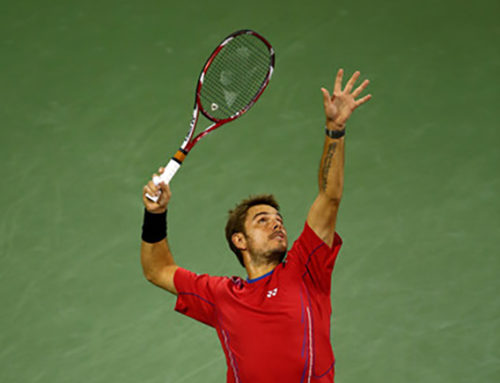Why Kyrgios Is A Better Server Than Zverev
Nick Kyrgios is a better server than Alexander (Sascha) Zverev. This may seem like stating the obvious, especially in the light of their match at Miami last night in which the serve was the deciding factor. However it needs to be stated, because Nick Kyrgios isn’t just a better server than Zverev, he is a MUCH better server than Zverev.
Coming Up Aces
Thanks to the good work over at Tennis Abstract, we know that the mercurial Australian hits an ace a whopping 17.5% of the time, despite being 2 inches shorter than his German colleague. Indeed the list of people serving aces at a higher rate than Kyrgios is extremely short. How short? It’s Ivo Karlovic (6’11), John Isner (6’10), and Giles Muller (6’4). That list short on names but long on height. As for Zverev? Sascha manages an ace on about 8% of his serves.
Watching Zverev play, there can be no pretending that he is serving defensively. Sascha’s first serve averages around 125 mph (a little over 200 kph) and regularly climbs to 135 mph (215 kph). At 6’6, Zverev stands among the big men in professional tennis. Sascha should be able to reach more of the service box and create angles unavailable to most players. For some reason he cannot.
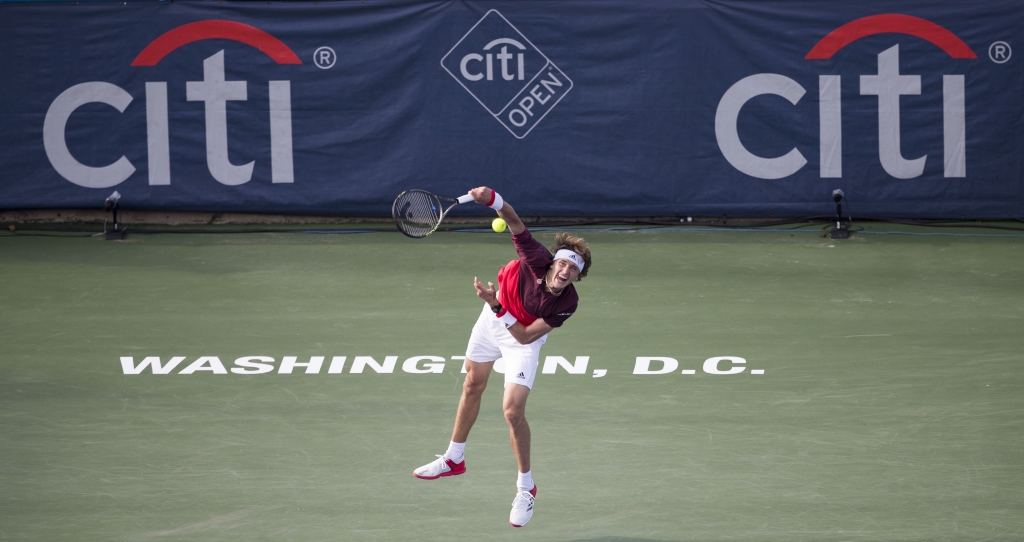
But It’s Not Only About Aces!
Of course it isn’t. This is where the plot thickens. Sasha Zverev is making his first serve 60.3% of the time. The shorter (relatively) Nick Kyrgios is serving an average of 67.3% first serves. Kyrgios isn’t just hitting a more effective serve – he’s making more of them also.
When we add in the fact that Zverev hits more double faults (5.5% to Kyrgios’ 3.7%), more double faults per second serve attempts (13.8% to 11.5%) and just generally wins less points on serve, we can safely say that Sascha isn’t trading off aces in exchange for safety. This leads us to the obvious question.
Why?
The simple answer is that Nick Kyrgios is doing things on the serve in a technically superior way than Zverev. Zverev’s delivery may have, on average, slightly more velocity than that of Kyrgios. However Nick’s serve has more spin, superior accuracy and better disguise. Kyrgios is just serving a better quality ball than Zverev is, and he’s hitting it to better locations.
With two such high level athletes, assuming that Nick is just somehow inherently more accurate would be foolish. There are technical explanations for these differences. To explain superior accuracy we typically look at a few things: balance, cleanness/simplicity of the motion, and spin generation (spin allows for more control).
Serving Stance
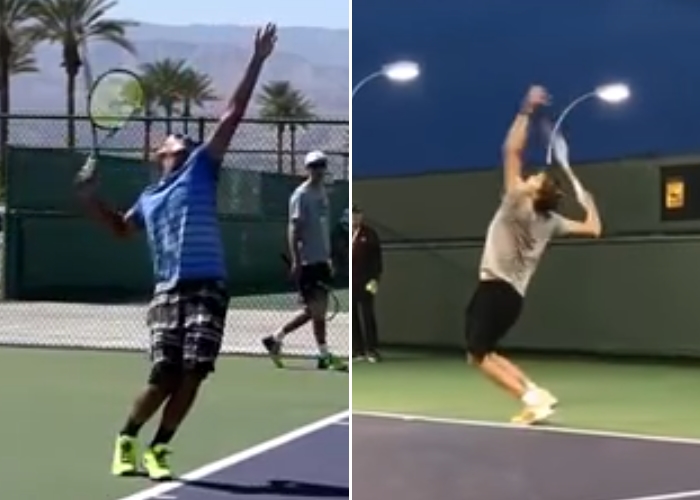
Generally speaking we prefer a platform stance (where the feet are separated when the leg drive begins) over that of the pinpoint stance (where the feet are together, as pictured above). In this case however both players use the same pinpoint hitting stance. Both players reach this stance smoothly and are balanced upon the onset of their leg drive. As such we cannot look to their feet for the answer.
Arm Action
If the feet aren’t the action, then the arm must be. Let’s begin by taking a look at Alexander’s arm position.
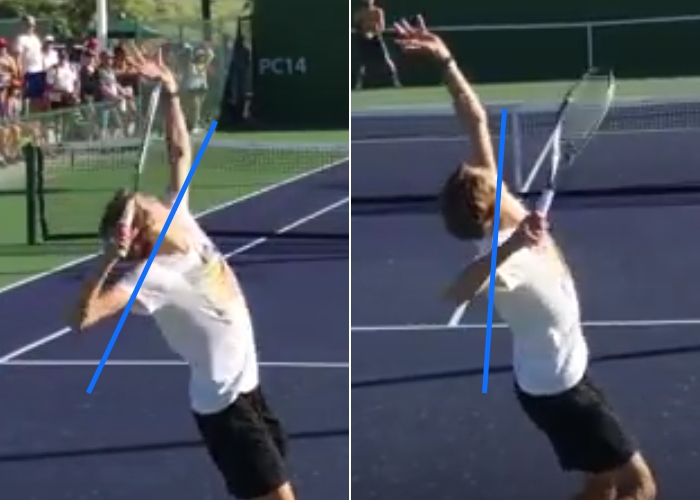
We see Zverev hitting serves during practice at this year’s Indian Wells tournament (2017). We’ve captured slightly different angles of the serve to show the essential problem with Zverev’s arm action in one single image.
An essential part of the service motion is the external rotation of the shoulder that occurs from the trophy position in the serve. For ideal external rotation to occur, the elbow should be in line with the shoulders in two dimensions (vertically and horizontally). In the left frame of the image above we can see that Sascha’s elbow is elevated above the ideal plane, which would lie on the blue line. Likewise in the frame on the right, we can see that Zverev’s elbow is to the left of the ideal alignment.
How does this impact the serve?
In the fraction of a second following this position, Zverev’s elbow must both drop and pull forward to maximize his external rotation.
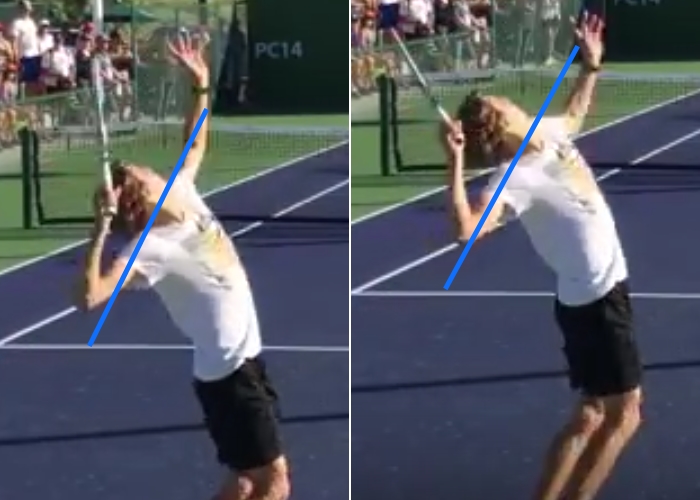
In the two frames immediately following, we see this is exactly what happens. Zverev’s elbow drops into position as he begins to rotate the shoulder back.
Why exactly is this a problem?
As you might imagine, having the elbow dipping during a period of extreme acceleration isn’t the most stable configuration. And when you’re trying to strike a ball some 125 mph on a regular basis, stability is pretty important. The more unnecessary movement there is in a service motion, the more things there are that can go wrong. What does Kyrgios’s comparable position look like?
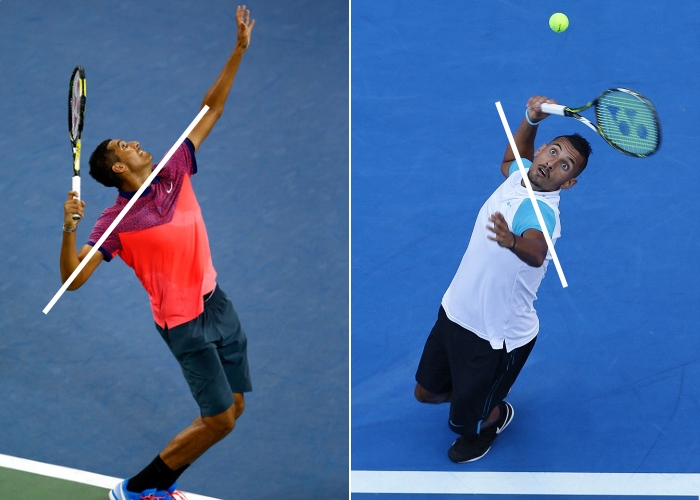
Even just a quick glance shows that Kyrgios’s arm is in beautiful alignment. Once his elbow reaches the appropriate position during his preparation phase, it stays there, with the forearm, hand and racquet rotating about that point in space. This allows Nick to have both optimal and repeatable movement in this aspect of his serve.
Conclusion
Needless to say this doesn’t explain every difference between the serves of these two players. Nick Kyrgios’s serve is more effective in part due to the superior spin profile he puts on the ball compared to the flatter first delivery of Zverev. However it does highlight a very real and serious problem with Zverev’s service motion. If he doesn’t address this, he will continue to struggle with both his first serve percentage and the accuracy of the serve when he does make it.
For Alexander Zverev to truly become that next level player and step up to become a top 5 fixture, he will have to continue to refine his game. Tweaking his serve for better performance, and improving his understand that pace alone is not enough, will go a long way to doing so.

